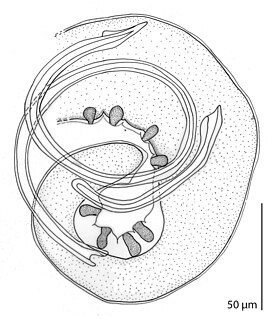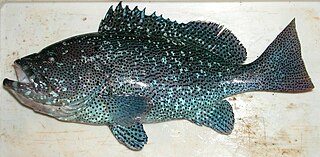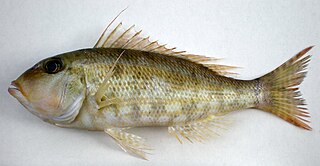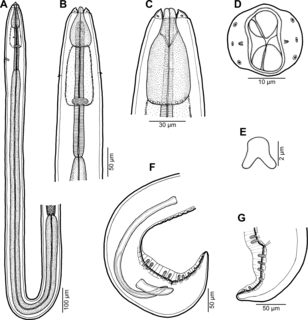 W
WAnisakis is a genus of parasitic nematodes that have life cycles involving fish and marine mammals. They are infective to humans and cause anisakiasis. People who produce immunoglobulin E in response to this parasite may subsequently have an allergic reaction, including anaphylaxis, after eating fish infected with Anisakis species.
 W
WAnisakis simplex, known as the herring worm, is a species of nematodes in the genus Anisakis, which occurs in ocean fish such as herrings. Human infections can cause severe abdominal cramps. The worm drills through the intestinal wall and lodges in muscle tissue.
 W
WAscarophis is a genus of parasitic nematodes, belonging to the family Cystidicolidae. Species of Ascarophis are parasitic as adults in the gastrointestinal tract of marine and estuarine fishes.
 W
WCucullanidae is a family of parasitic nematodes, created by Cobbold in 1864. It includes the following genera:Cucullanus Müller, 1777 Dichelyne Jägerskiöld, 1902 Neocucullanus Travassos, Artigas & Pereira, 1928
 W
WCucullanus is a genus of parasitic nematodes. The genus includes more than 100 species.
 W
WCucullanus austropacificus is a species of parasitic nematodes. It is an endoparasite of the fish Conger cinereus. The species has been described in 2018 by František Moravec & Jean-Lou Justine from material collected off New Caledonia in the South Pacific Ocean.
 W
WCucullanus bulbosus is a species of parasitic nematodes. It is an endoparasite of carangid fishes.
 W
WCucullanus elegans is a species of parasitic nematode. It is an endoparasite of the European perch.
 W
WCucullanus epinepheli is a species of parasitic nematodes. It is an endoparasite of the brown spotted reef cod Epinephelus chlorostigma. The species has been described in 2018 by František Moravec & Jean-Lou Justine from material collected off New Caledonia in the South Pacific Ocean.
 W
WCucullanus gymnothoracis is a species of parasitic nematodes. It is an endoparasite of the lipspot moray Gymnothorax chilospilus. The species has been described in 2018 by František Moravec & Jean-Lou Justine from material collected off New Caledonia in the South Pacific Ocean.
 W
WCucullanus incognitus is a species of parasitic nematodes. It is an endoparasite of the rare sparid fish Dentex fourmanoiri. The species has been described in 2018 by František Moravec & Jean-Lou Justine from material collected off New Caledonia in the South Pacific Ocean. Only female specimens were found.
 W
WHuffmanela is a genus of parasitic nematodes, belonging to the family Trichosomoididae.
 W
WHuffmanela branchialis is a parasitic nematode It has been observed on the gills of the fork-tailed threadfin bream Nemipterus furcosus, a nemipterid marine fish off New Caledonia. Its eggs are released from the gill mucosa with the turnover of living tissues and immediately continue their life-cycle.
 W
WHuffmanela filamentosa is a parasitic nematode It has been observed on the gills of the lethrinid fish Gymnocranius oblongus and Gymnocranius grandoculis off New Caledonia. Its eggs are released from the gill mucosa with the turnover of living tissues and immediately continue their life-cycle.
 W
WHuffmanela hamo is a parasitic nematode. It has been observed in the muscles of the dagger-tooth pike conger Muraenesox cinereus, a muraenesocid marine fish off Japan. Its life-cycle is unknown.
 W
WHuffmanela lata is a parasitic nematode. It has been observed on the skin of the grey reef shark Carcharhinus amblyrhynchos off New Caledonia. This species has only been reported once in the scientific literature.
 W
WHuffmanela ossicola is a parasitic nematode. It has been observed in the branchial arch bone and the spinal cord bone of the labrid marine fishes Bodianus loxozonus, Bodianus busellatus and Bodianus perditio caught off New Caledonia. This is the first species of Huffmanela reported from bone tissue. Its eggs are only available for the continuation of the life-cycle after the host's death.
 W
WMoravecnema is a genus of parasitic nematodes, belonging to the family Cystidicolidae. Species of Moravecnema are parasitic as adults in the gastrointestinal tract of fish. According to the World Register of Marine Species, the genus currently (2019) includes a single species, Moravecnema segonzaci, which is a parasite in a deep-sea fish.
 W
WParacapillaria is a genus of parasitic nematodes. Species of the genus Paracapillaria parasitise fishes and amphibians, reptiles (snakes), and a single species, Paracapillaria philippinensis (Chitwood, Velasquez & Salazar, 1968), is known from birds and mammals including man.
 W
WPhilometra is a genus of nematodes, which are parasites of marine and freshwater fishes. The genus was erected by Oronzio Gabriele Costa in 1845.
 W
WPhilometra cyanopodi is a species of parasitic nematode of fishes, first found off New Caledonia in the South Pacific, in the gonads of Epinephelus cyanopodus. This species is characterized mainly by: length of spicules and length and structure of its gubernaculum; structure of male caudal end; body size; location in host and types of hosts.
 W
WPhilometra fasciati is a species of parasitic nematode of fishes, first found off New Caledonia in the South Pacific, in the gonads Epinephelus fasciatus. This species is characterized mainly by: length of spicules and length and structure of its gubernaculum; structure of male caudal end; body size; location in host and types of hosts.
 W
WPhilometra lethrini is a species of parasitic nematode of fishes, first found off New Caledonia in the South Pacific, in the gonads of Lethrinus genivittatus. This species is characterized mainly by: length of spicules and length and structure of its gubernaculum; structure of male caudal end; body size; location in host and types of hosts.
 W
WRasheedia heptacanthi is a parasitic nematode in the genus Rasheedia.
 W
WRasheedia novaecaledoniensis is a parasitic nematode in the genus Rasheedia.